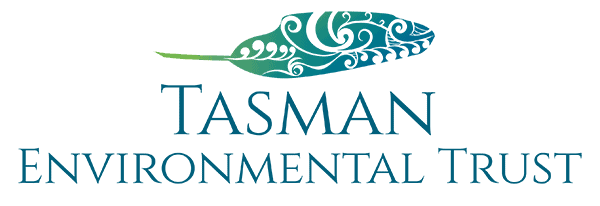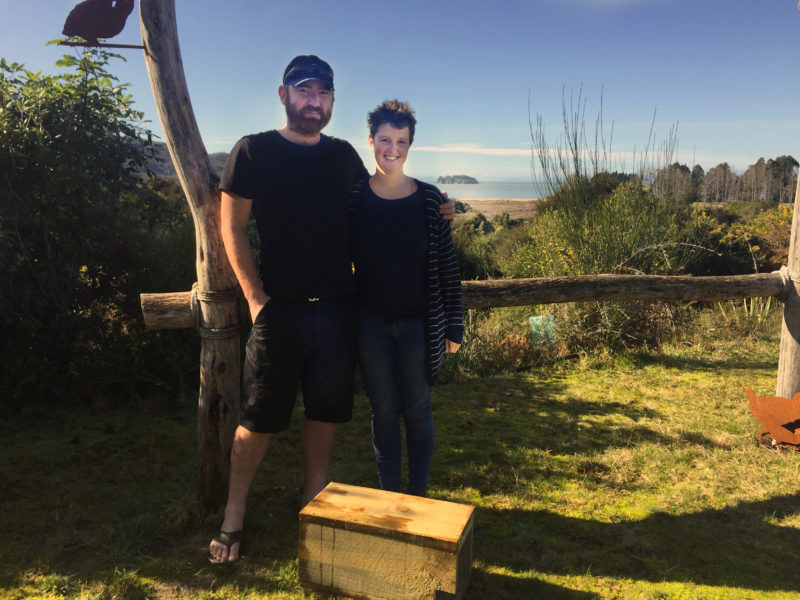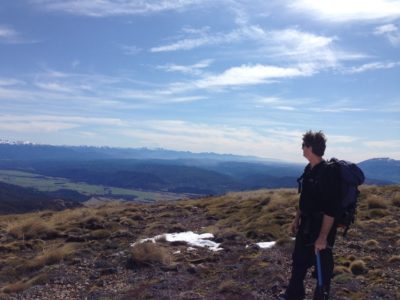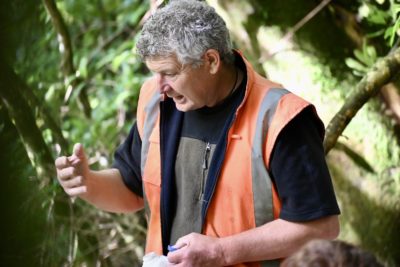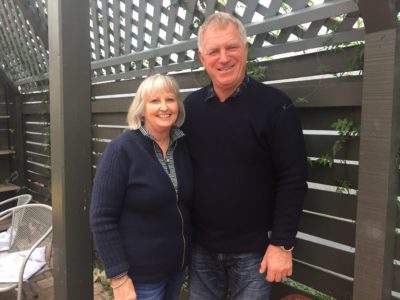Chris Palzer’s ambitious aim is to make Aoteareoa predator-free by 2050. She’s begun the mahi by focusing on her own backyard, with the Mārahau Halo Trapping Project.
Chris has lived in Mārahau since she was three years old. Her parents moved onto their property in 1993 and transformed it from gorse-covered hills to the biodiverse haven that it is today. The Palzers built their home and additional self-contained chalets, and opened their business—Ocean View Chalets—in December 1993. Chris and partner Jared Boscke now run the business.
Both conservation-minded, Chris and Jared started the community-led Mārahau Halo Trapping Project in 2020. The aim is to create a pest-free halo around the Abel Tasman National Park.
Chris recently took some time out to tell TET more about the project and early results.
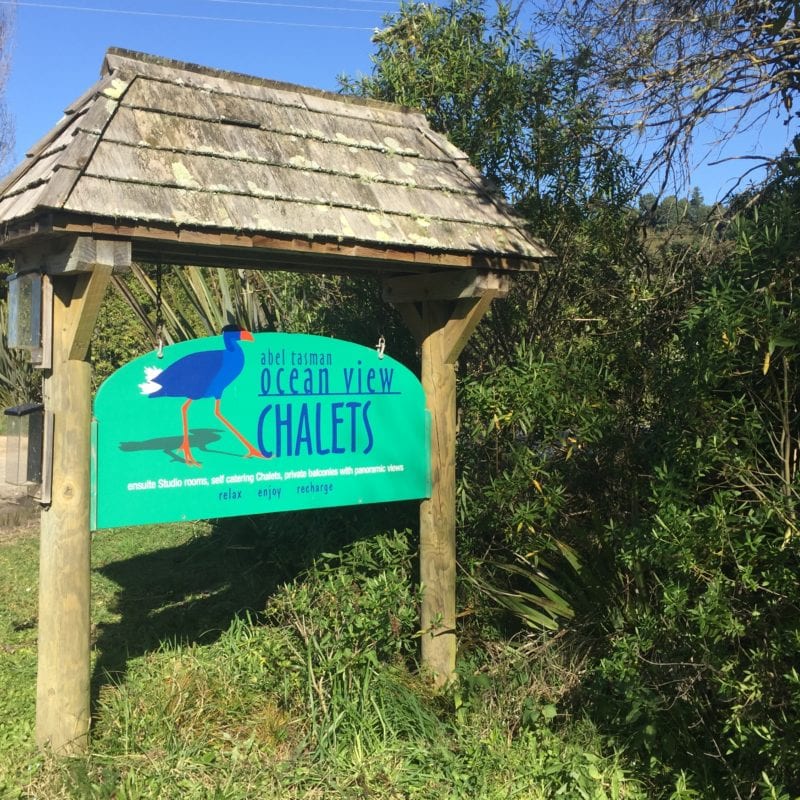
How did you get started and why?
We used to do quite a lot of volunteer work with Abel Tasman Birdsong Trust, and had experience with trapping. We realised that there was so much happening in the Abel Tasman National Park but not a lot happening outside it. Terry Standbridge at Otuwhero has been doing trapping for years and years, on private land and DOC-owned land to the estuary, but there was nothing between the two areas.
We talked with DOC and Project Janszoon before we started up and they were really keen but hadn’t really known anyone to talk with to get things done. We approached all the local businesses and had really good support. We fundraised to buy supplies and Jared built the traps. We also bought some from the Menz Shed.
How many traps and where?
We have about 150 traps out. Trap lines run up Harvey Rd, Mārahau Valley Rd, through the Mārahau wetlands and down Newhaven Crescent. They are parallel to the traps that are in the park, and are listed on the Trap NZ site.
Who looks after the traps?
A lot of our traps are on private land so are all looked after by the landowners who check their own traps. Landowners are responsible for the traps on their land, and then Jared and I with a couple of volunteers check and take care of the other traps that aren’t on private land.
How often do you check the traps?
Ideally traps are checked fortnightly but as many … are on private land and that’s mostly on working farms, it’s really when the landowners have time and can fit it in.
What sort of traps and bait do you use?
We use Doc 150s and 250s, … double traps too, and rat traps. We use dehydrated rabbit—‘Eraze’—for baits. We use peanut butter in our rat traps and for any trap that’s multi-purpose.
How successful is the project?
We’re not seeing as many predators as we thought we would … considering the numbers that are being trapped in the national park. Whether that’s because there’s just more in the national park and less out here, or … because we’re sandwiched between these two big projects—Otuwhero and Project Janszoon—and we are just in the middle, we don’t know. Predominately we’ve been catching rats, with occasional hedgehogs, stoats and weasels.
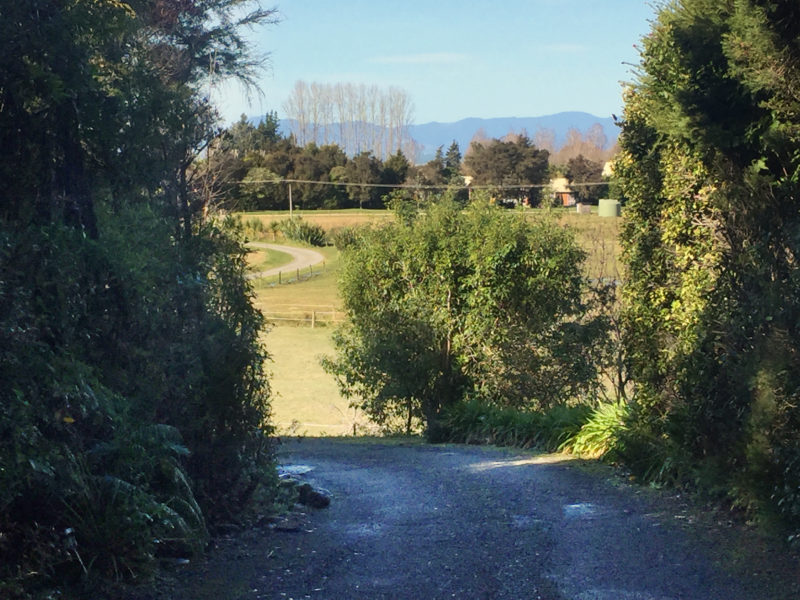
Are you trapping possums?
Not at the moment. Anecdotally, since they’ve cleared the forestry we haven’t been hearing possums around. But in the future, we would like to look into trapping possums and getting the community involved.
Is there support for trapping groups?
Through Tasman Environmental Trust (TET) there has been a meeting of local trapping groups. We had a day when we all brought our traps and showed each other different ways of making the traps. It was good to share our experiences and tips, and our different trapping stories. We look forward to the next one.
What would you like to see for the future?
It would be great to get every community trapping everywhere. At the moment, trapping’s just being done in small pockets, and there’s nothing linking it all together. TET has started to make an informal inventory of where people are doing it. But it needs to happen on a larger scale with a more unified approach.
Do you think Predator Free 2050 is achievable?
A lot of trapping has started up from the grassroots but it’s hard to say without knowing what the Government is really interested in putting into it. We remain hopeful that it will be achieved.
Chris and Jared have been under the umbrella of TET for about a year but before that they worked independently. Mārahau Halo Trapping Project is listed on TET’s website here. For more information or advice on trapping in the area, contact Chris at mā[email protected]
